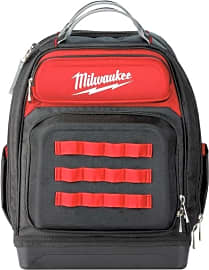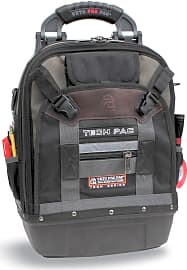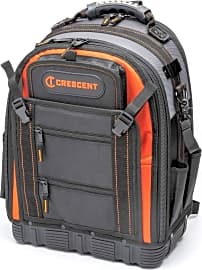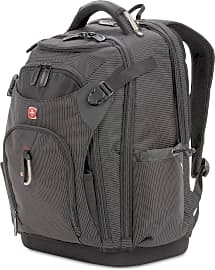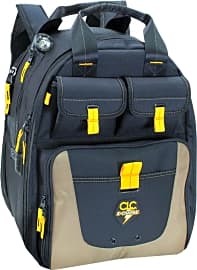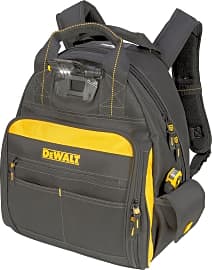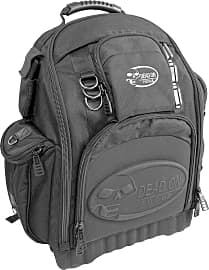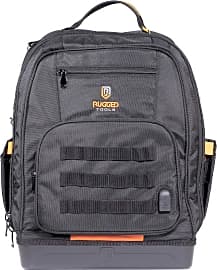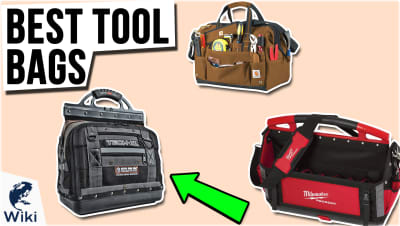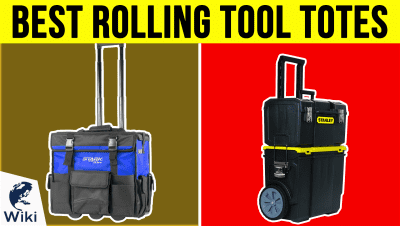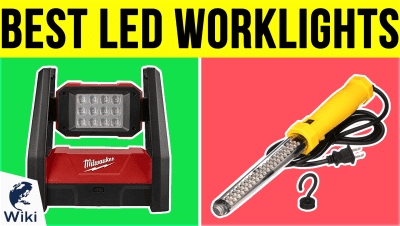The 10 Best Tool Backpacks

This wiki has been updated 38 times since it was first published in February of 2016. You might feel more like you're waiting for a school bus than walking onto a job site, but once you get past the look, tool backpacks can provide a practical, ergonomic alternative to traditional tool bags. In addition to offering a great opportunity for organization, they also keep both your hands free when you're unloading the truck, so you can haul some material in at the same time. When users buy our independently chosen editorial recommendations, we may earn commissions to help fund the Wiki.
Editor's Notes
December 03, 2020:
It was a busy round of updates that saw the majority of our picks replaced. Our remaining selections from last time are the Fluke Pack30, DeWalt DGL523, Custom Leathercraft ECPL38 and Veto Pro Pac Tech.
Noting that our list already included the superior Custom Leathercraft ECPL38, we decided to remove the Custom Leathercraft 1134, recognizing that there were plenty of excellent alternative rankings available from other great brands in the category. Applying the same logic, we also decided to eliminate the DeWalt DGCL33 – which DeWalt openly advertises as being made in collaboration with Custom Leathercraft – recognizing that it was a virtual copy of Custom Leathercraft ECPL38, with the only substantial difference being that the ECPL38 includes a generic power bank that you can charge via USB, while the DGCL33 includes a proprietary power bank that runs on a 20-volt battery from the company’s popular line of cordless power tools. For users who already work with DeWalt tools, this might actually make the backpack a better fit, but for the rest of our audience it rendered the feature useless, so it seemed sensible to get it off our list. Note that while our remaining ranking from DeWalt – the DeWalt DGL523 – does include a small, built-in LED work light, it doesn’t appear to run on the company’s lithium ion cells.
We replaced the Milwaukee Packout 48-22-8301 and the Klein Tools 55421BP-14 with the Milwaukee Ultimate 48-22-8201 and Klein Tools Tradesman Pro 55485. Both new additions are essentially bigger versions of their predecessors, and they impressed us with laundry lists of useful features, earning spots high up on our list as a consequence. They definitely aren’t the most affordable models in the category, but they are both backed by limited lifetime warranties. If you’re a serious professional, these two bags – along with the Veto Pro Pac Tech – are the first ones I suggest you consider.
In spite of a brand name that’s synonymous with durability and working life, the Carhartt Legacy was culled from our list because it just didn’t meet muster. Carhartt offers a line of stylish backpacks that might be great for semesters on campus and days at the beach, but they lack basic qualities – like reinforced bottoms and myriad pockets – that would make them suitable for this list.
Our remaining new additions were the Rugged Tools Worksite Bag — which is one of the more affordable models we included; the Dead On Tools The Destroyer DO-DES — which doesn’t have a bottom as solid as many models in the category, but does have a 50-pound carrying capacity and 17-inch laptop sleeve; the Swiss Gear Work Pack Pro — which sports a number of smart features, like a fleece-lined pocket for glasses and top handle reinforced with aircraft cable; and the Crescent Tradesman CTB1000 — which comes with a three-year warranty on its zippers, and limited lifetime coverage on the rest of the bag.
November 14, 2019:
If you're a traveling handyman or electrician, there's no doubt you've struggled carting your gear from one location to the next at some point in your career. Tools can be heavy, awkwardly shaped, and there are so many of them, keeping everything secure and organized is a job unto itself. Luckily, tool backpacks exist, and they have a ton of pockets, compartments, rings, and more to ensure your stuff is always in order and ready to go. Newer backpack designs even have protected pockets for electronics. Beyond organization, backpacks distribute the weight of the load across the upper body, which makes for a more comfortable experience. The same can't always be said for regular toolkits and messenger bags.
There are other smart ways to carry your tools if you simply can't see yourself in a backpack. If your collection of supplies isn't too hefty, a standard handheld tool bag should do the trick. On the other end of the spectrum, when you aren't able to physically carry your tools, a rolling tool tote may be the best solution for you.
The ToolPak Original and Milwaukee Jobsite have been removed after reviewing and confirming quality complaints. The Veto Pro Pac MC was removed due to complaints regarding its awkward design. The Milwaukee Packout and Fluke Pack30 are the two new additions to the list, included for their extremely durable designs. Both backpacks feature molded bottoms that keep them upright when you set them down.
Why Tool Backpacks Are The Next Big Thing In Construction
Tool backpacks can eliminate another construction place hazard - trips.
Quality organizational systems in your workshop, like tool cabinets and storage racks, are certainly helpful when working from your home or office. But busy handymen and construction workers rarely stay in one place. When it's time to go to a work site, they need a reliable way to transport their tools, like a tool backpack. Regular backpacks will not suffice.
Tool backpacks are designed with material rugged enough to withstand being poked and prodded by sharp tools, as well as equipped with several well-organized pockets that make tools easily accessible. Unlike tool boxes, these backpacks leave a worker's hands-free. This is especially important when they need to climb a ladder to get to the problem area that needs fixing. Around 20 percent of occupational falls each year happen from a ladder. Having both hands to securely climb a ladder can hopefully reduce that number.
Tool backpacks can eliminate another construction place hazard - trips. Construction sites are typically littered with buckets, blocks of cement, step ladders, and other items. Leaving tool boxes on the floor presents yet another tripping hazard. Plus, when someone trips on a tool box, they typically knock it over, sending sharp tools sprawling onto the floor. This, too, can be quite dangerous. Some may argue that tool bags equally solve the problem of leaving boxes on the floor. But tool bags must be carried on just one side of the body and can put too much strain on one's shoulders and neck, adding to the list of chronic pains construction workers develop. Tool backpacks are designed to evenly distribute the weight of tools on the wearer, and to prevent back problems.
Another accessory some may argue rivals the tool backpack is the trolley. These have their merits, but they can present problems when one is working on a site with a lot of stairs and no working elevator. In that case, a worker is still forced to carry the trolley, much like they would a bag.
What Makes A Tool Back Pack Superior To A Regular One
Tool backpacks typically have solid bottoms that allow them to stand on their own, making it easy for a worker to grab tools without having to open the backpack each time. These are also commonly made from water-resistant materials to help protect tools from damp conditions.
This extends to the bottom, which usually has a little extra protection to survive being dragged across rough, unfinished floors.
Not only are these backpacks water-resistant, but they're also ruggedized and can withstand the harsh conditions of a construction site. This extends to the bottom, which usually has a little extra protection to survive being dragged across rough, unfinished floors. Tool backpacks have special pockets designed for each of the most commonly used tools on construction sites like wrenches, hole saws, and extension cords. Many models also contain a padded area for a tablet, so contractors can keep track of their work calendar and contacts without worrying about their tools scraping up their device's screen.
Even the more lightweight tool backpacks are designed to support heavy loads. For this reason, the shoulder pads are typically wide and extra-padded to provide the wearer comfort. One can usually find intelligent exterior pockets and loops on tool backpacks, too, for things like a measuring tape and flashlights. Poor lighting is a major occupational hazard. Workers cannot always control whether their environment will be well-lit, but keeping a flashlight within arms-reach can prevent slips and falls.
Essential Tools Every Tool Backpack Should Have
When rushing to a handyman job, unaware of exactly what sort of problem one will face, there are a few items one should always keep in their tool backpack. Safety goggles should be on a construction worker's person at all times. Workplace eye injuries send tens of thousands of people to the emergency room each year, and even the tiniest piece of scrap metal or handful of sawdust can cause severe damage.
Safety goggles should be on a construction worker's person at all times.
Another crucial addition to a tool backpack is a laser measure. One cannot possibly properly mark areas that need to be drilled, or determine the exact amount of material that must be cut if they do not have an accurate measurement. Without one, construction would all be guesswork. If you work in construction for a living, you cannot be without a level, either. If you install something unevenly, you will likely be asked to redo the job for no additional pay.
Many of the power tools in your backpack may become unusable if you do not carry an extension cable with you. On busy work sites, there are rarely enough electrical outlets available where you need them. There will also be times when your tool needs to reach a roof or ceiling, and there are generally no outlets up there. One final tool that could save your life is a voltage tester, which can stop you from accidentally touching live electrical wires.


